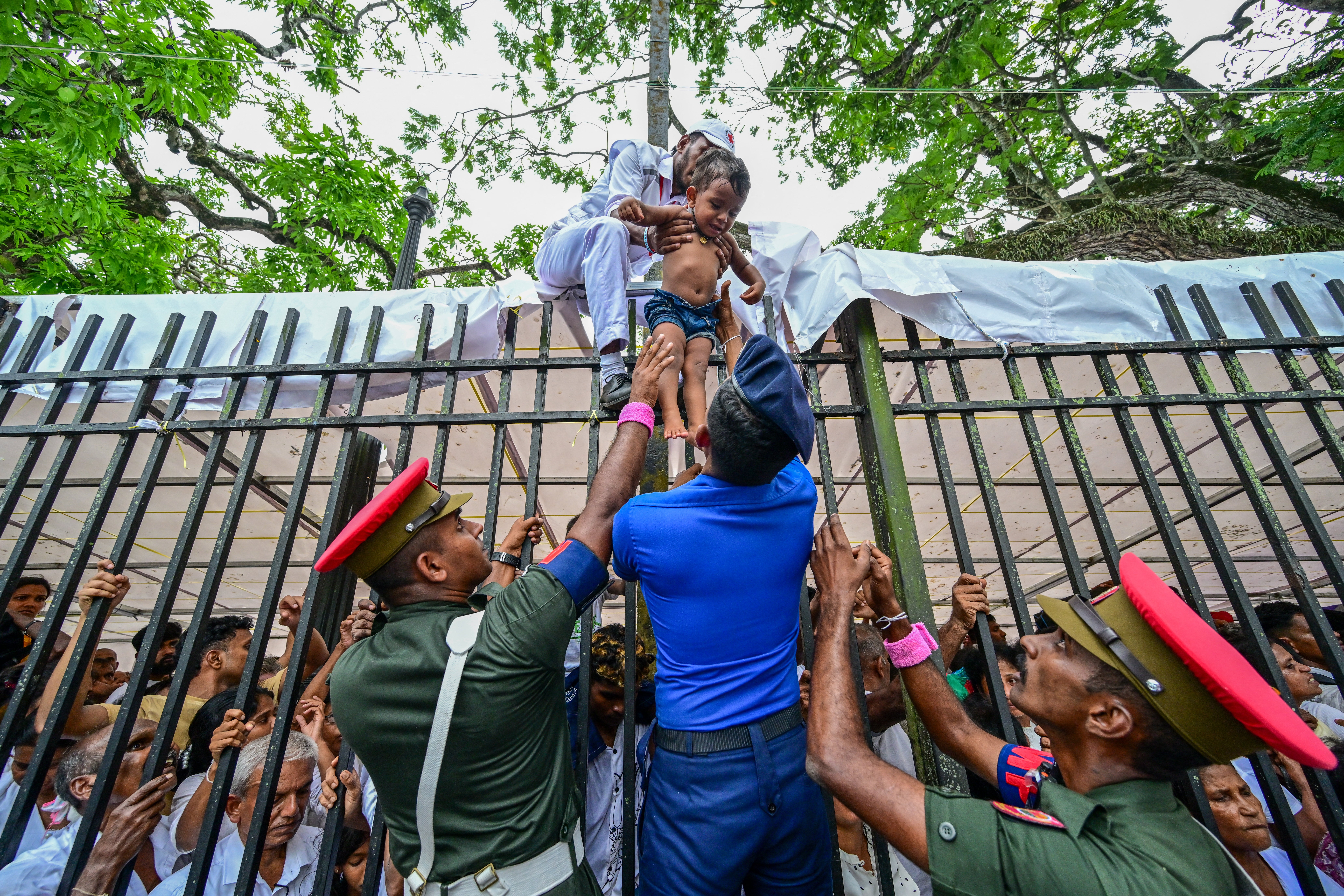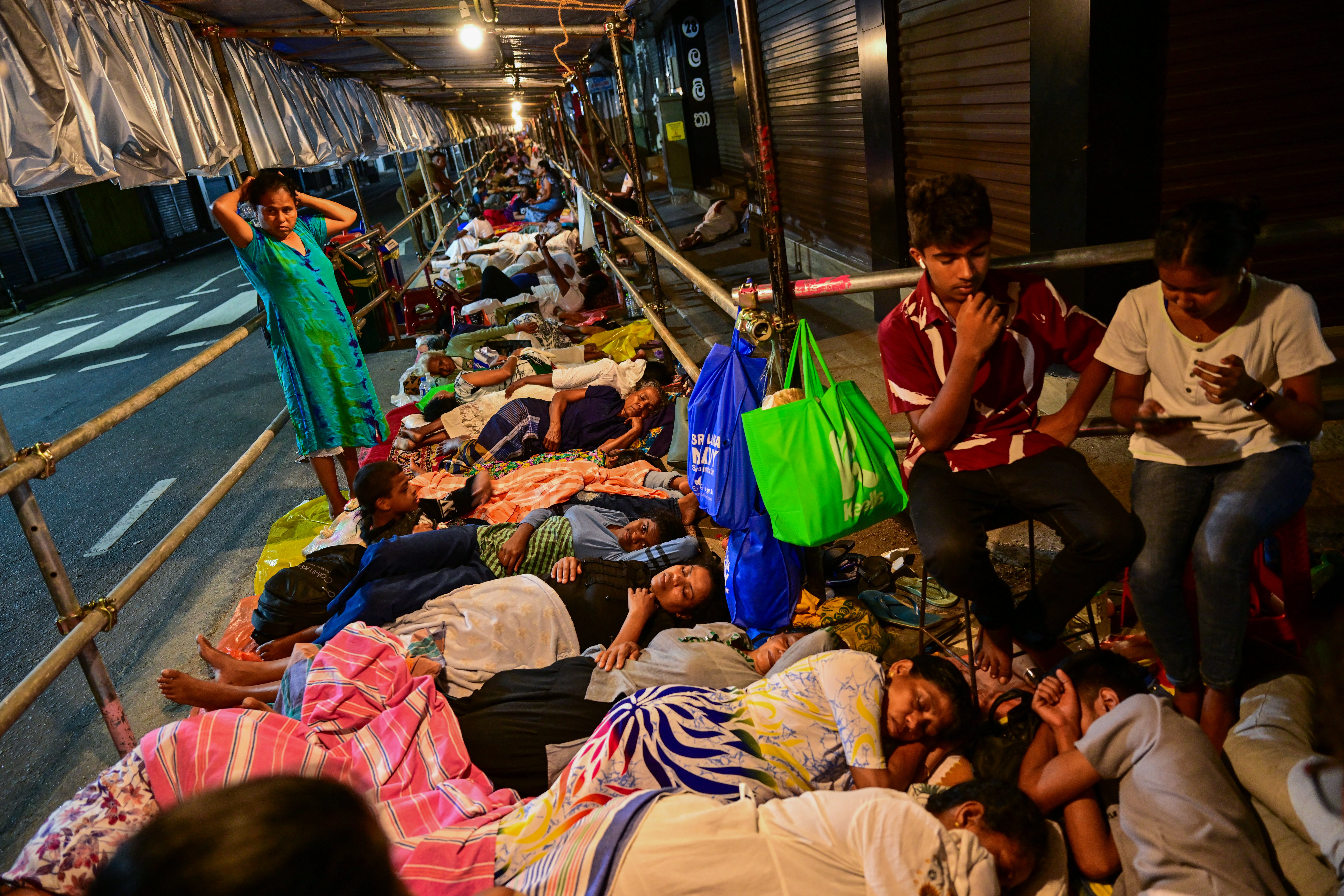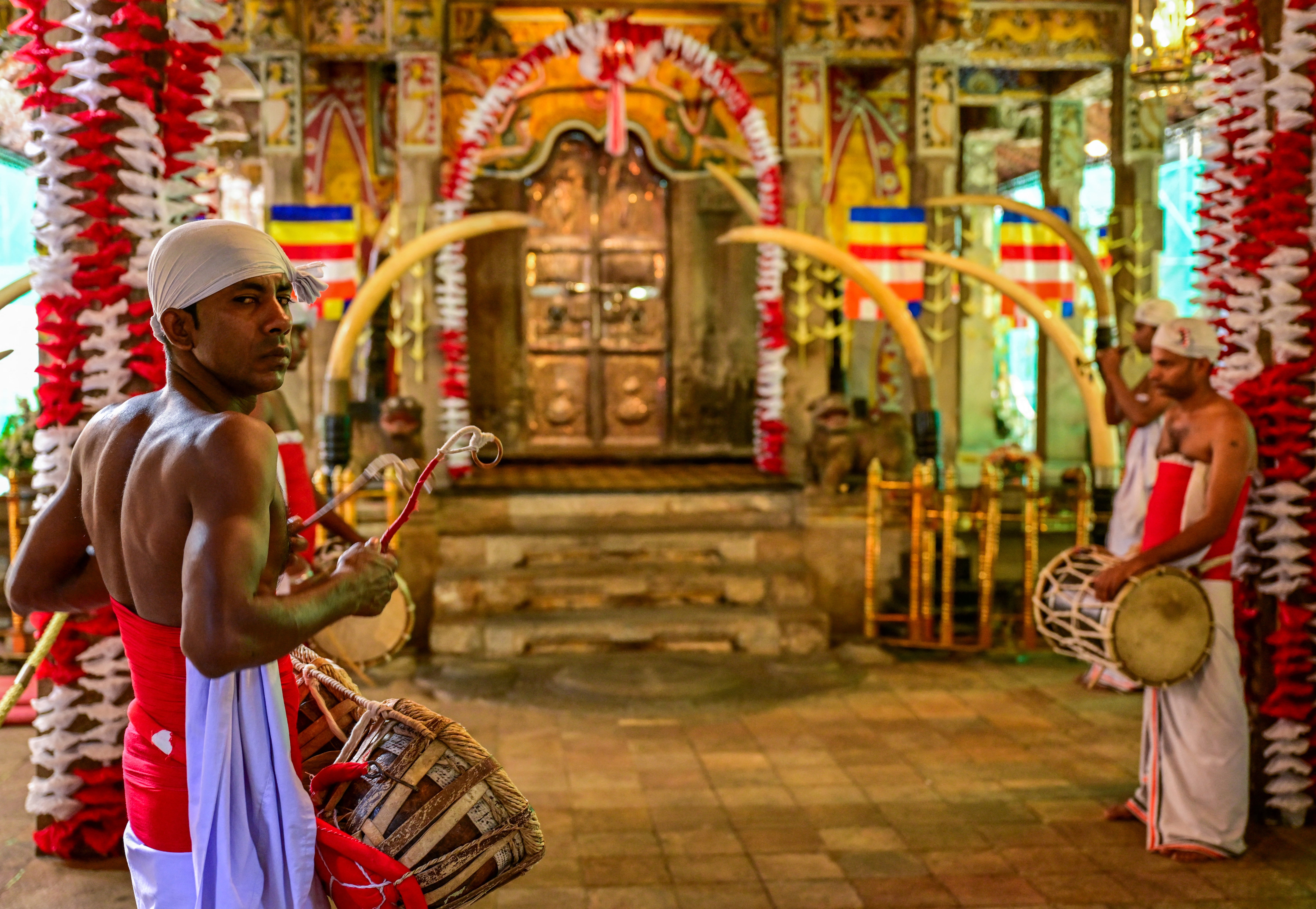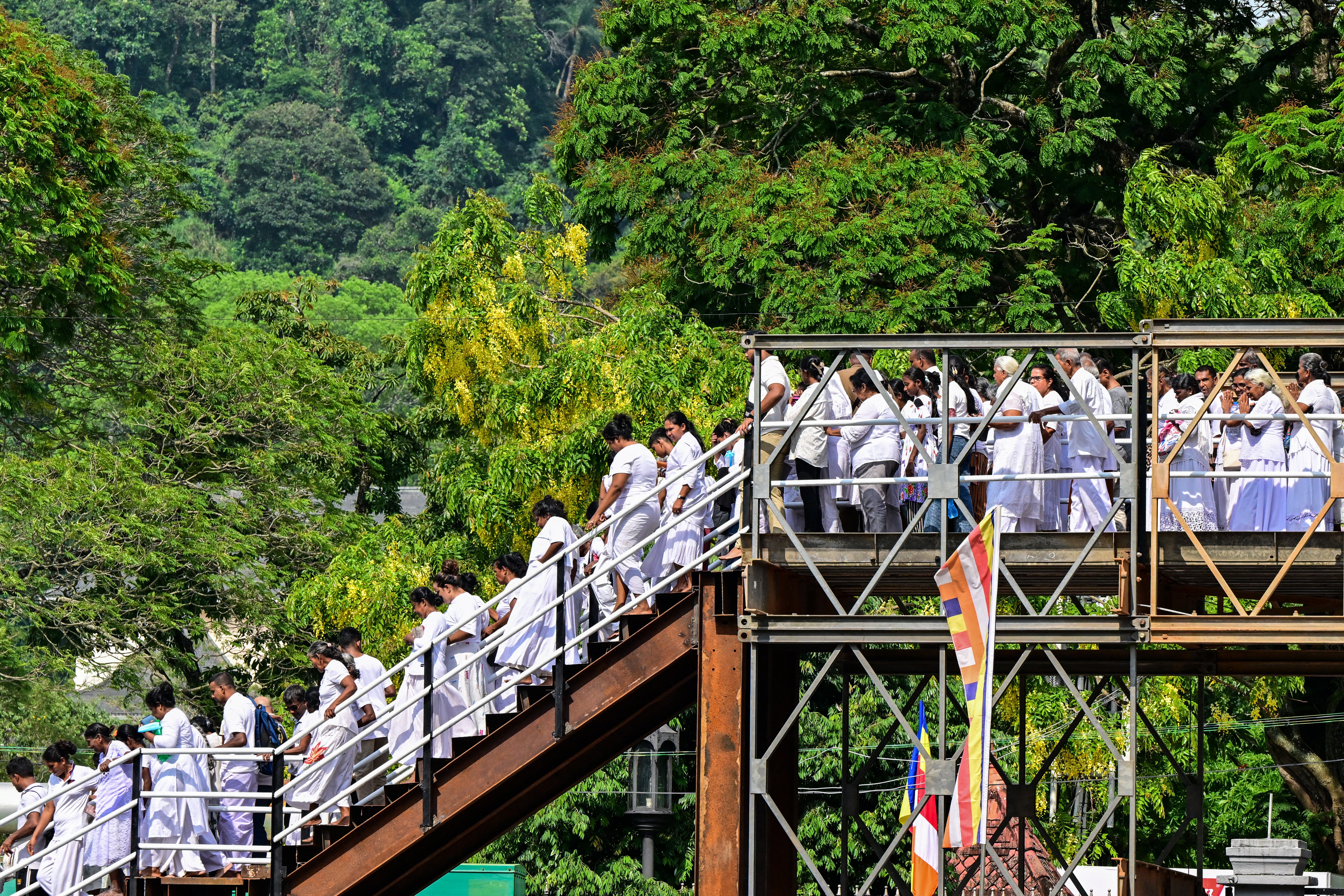Sri Lankan authorities are urging people to stop flocking to the city of Kandy to see a sacred relic after four people died and hundreds fell ill from spending long hours in overcrowded queues.
The relic is believed by devotees to be a tooth of the Buddha.
Nearly 450,000 pilgrims – more than double the expected number – lined up for a rare public display of the relic on 23 April.
The artefact is housed in the Temple of the Sacred Tooth Relic, a Unesco world heritage site known locally as the Sri Dalada Maligawa.
The relic is on public display for the first time since 2009. The public exhibition ends on 27 April.

“At the rate the queue is moving, even those already in line this morning may not be able to enter the temple,” regional police chief Lalith Pathinayake said. “We appeal to the people not to come to Kandy.”
Authorities reportedly suspended the extra trains announced for the pilgrimage, deployed police commandos and diverted buses as they feared a stampede at the temple. They also deployed commandos to prevent a potential bridge collapse from the weight of thousands of pilgrims.
Kandy authorities reportedly turned away 32 buses carrying pilgrims as the city ran out of parking space.

Nearly 300 people were admitted to the city’s main public hospital after falling ill from spending days in cramped conditions to get a glimpse of the relic. Some 2,000 people reportedly fainted while waiting in line.
An elderly woman was pronounced dead on arrival at the hospital. Three other people were confirmed to have died as well. “We are trying to avoid a stampede,” provincial governor Sarath Abeykoon was quoted as saying by AFP.

The last time the sacred relic was publicly displayed, it drew around one million people.
The Temple of the Sacred Tooth is located near the ancient Royal Palace and is one of the most revered Buddhist sites in the world.

Earlier this week, it was reported that Sri Lankan police had launched an investigation after a photo purportedly showing the Buddha tooth relic, which is strictly forbidden to be photographed, circulated on social media.
Authorities were trying to determine if the image was secretly taken during the current exhibition or if it was doctored.
Photography is banned inside the temple, with tight security measures in place, including plainclothes officers and cellphone restrictions.
Vatican honours Isis attack victims in one of last acts of Pope Francis papacy
American man arrested for smuggling 23kg cannabis into Sri Lanka
What is Indus Water Treaty and why is it so critical for India and Pakistan?
Sherpa climber set to break his own record for ascents of Mount Everest
Meet the last female Afghan ambassador as she leads the resistance against Taliban
Bangladesh demands genocide apology for 1971 atrocities as talks with Pakistan resume







